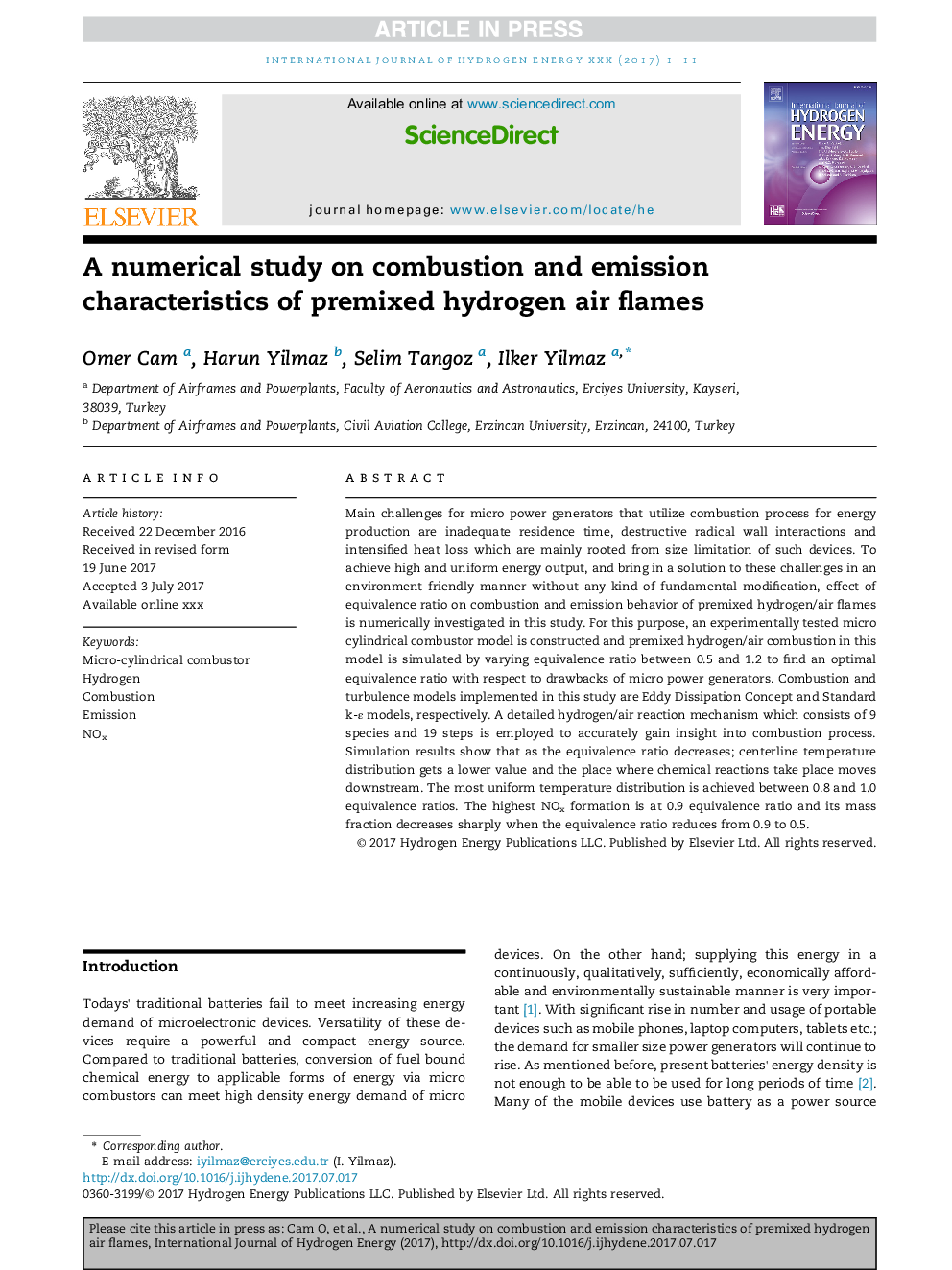| Article ID | Journal | Published Year | Pages | File Type |
|---|---|---|---|---|
| 5145673 | International Journal of Hydrogen Energy | 2017 | 11 Pages |
Abstract
Main challenges for micro power generators that utilize combustion process for energy production are inadequate residence time, destructive radical wall interactions and intensified heat loss which are mainly rooted from size limitation of such devices. To achieve high and uniform energy output, and bring in a solution to these challenges in an environment friendly manner without any kind of fundamental modification, effect of equivalence ratio on combustion and emission behavior of premixed hydrogen/air flames is numerically investigated in this study. For this purpose, an experimentally tested micro cylindrical combustor model is constructed and premixed hydrogen/air combustion in this model is simulated by varying equivalence ratio between 0.5 and 1.2 to find an optimal equivalence ratio with respect to drawbacks of micro power generators. Combustion and turbulence models implemented in this study are Eddy Dissipation Concept and Standard k-ε models, respectively. A detailed hydrogen/air reaction mechanism which consists of 9 species and 19 steps is employed to accurately gain insight into combustion process. Simulation results show that as the equivalence ratio decreases; centerline temperature distribution gets a lower value and the place where chemical reactions take place moves downstream. The most uniform temperature distribution is achieved between 0.8 and 1.0 equivalence ratios. The highest NOx formation is at 0.9 equivalence ratio and its mass fraction decreases sharply when the equivalence ratio reduces from 0.9 to 0.5.
Keywords
Related Topics
Physical Sciences and Engineering
Chemistry
Electrochemistry
Authors
Omer Cam, Harun Yilmaz, Selim Tangoz, Ilker Yilmaz,
